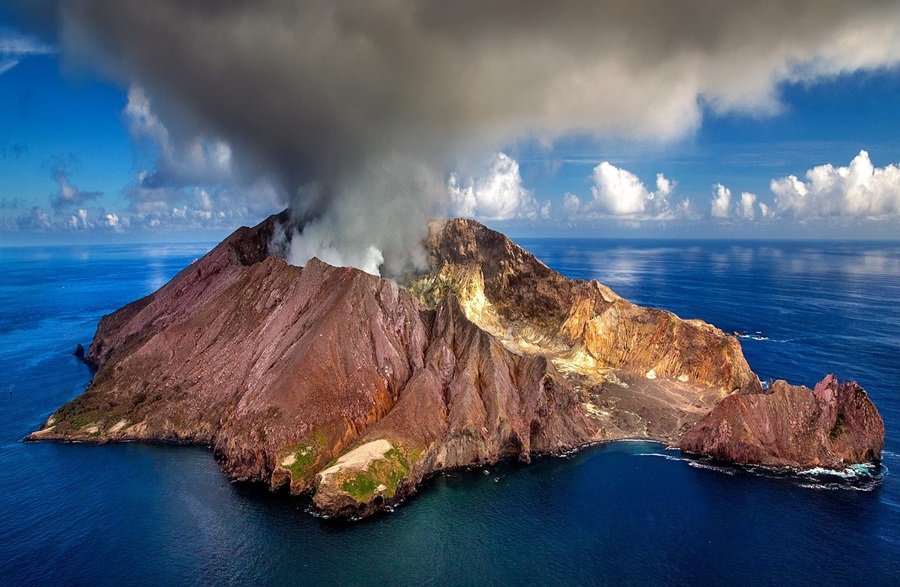- Science
- 7 de May de 2024
- No Comment
- 5 minutes read
Volcanoes: their importance and significance in our life

Volcanoes: their importance and significance in our life
Surprisingly, volcanoes symbolize life


Carlos Sanz de Galdeano
Volcanoes are often visualized as large cones spewing fire, lava, gases, and ash. And nobody would want to be near a volcano except for volcanologists. However, their forms are diverse. Some create extensive fissures for lava to escape, while others, the majority, are submarine. These underwater volcanoes cover a significant portion of the Earth’s crust, particularly the ocean floors. They form long bands that fill the gaps left by separating tectonic plates, acting as a form of “glue” that holds them together.
A prime example is the Mid-Atlantic Ridge, a mountain range of many thousands of kilometres that separates the Eurasian and American plates.
In other instances, volcanoes form where heat accumulates and creates magmas, molten rocks, and gases that can ascend. These are the subduction zones, sinking areas of plates. The Pacific Ring of Fire is a well-known example of these zones.
So, what do volcanoes signify for us, and how should we respond to them?
Surprisingly, volcanoes symbolize life. The atmosphere is renewed thanks to them, which would otherwise dissipate into outer space and become progressively rarefied. And without it, we can do little.
Mars, a planet devoid of active volcanoes, serves as an example. Its atmosphere is extremely thin due to gradual loss, and it is a thermally dead planet with almost no magnetic field and inactive plate tectonics. Fortunately, the Earth, being much larger than Mars, is still thermally active.
However, while volcanoes are essential for life, they also are dangers at certain points on Earth. Historical eruptions, such as that of Vesuvius in 79 AD, which resulted in numerous fatalities in Pompeii and Herculaneum, remind us of their destructive potential. To fulfil the saying that every cloud has a silver lining, we now have unparalleled testimonies of what Roman life was like then. Of course, those who died at that time would not share this opinion with us.
More recent examples include the eruption of Krakatoa in 1883, whose explosion was heard thousands of kilometres away, caused strong tsunamis and spread ashes worldwide to about 80 km in height. Another relatively recent example is the unpronounceable Eyjafjallajökull volcano (Iceland) whose emissions interfered with air navigation in much of Europe”.
Therefore, it is crucial to mitigate their potential adverse effects. While living far from them could be a solution, it is not always possible. If we were to avoid all volcanic regions, places like Iceland, the Canary Islands, the Azores, and many Indonesian islands would be uninhabited, which is not a viable option.
Understanding the behaviour of each volcano is crucial. Each volcano must be monitored, recording the tremors it produces – a term often used for earthquakes caused by volcanoes. This data must then be analysed and evaluated. This practice is common in places like Vesuvius or Etna, where the proximity to Naples and Catania is a constant reminder of their presence. The same was done during the recent eruption on the island of La Palma, and is routinely done in Iceland, Hawaii, and other volcanic regions. In addition to monitoring seismic activity, it’s also important to analyse the composition of the gases released by each volcano, as this can provide information about the current state of the eruption or predict future ones. The chemical composition of the lava is another crucial factor to consider. These studies often provide clear indicators of a volcano’s status. However, we must also be prepared for unexpected events.
In conclusion, it’s evident that our general geological knowledge needs to be improved. This is not only to mitigate geological risks, such as those presented by volcanoes, but also to enhance our understanding of our planet. For instance, if more people understood the nature of volcanoes, fewer visitors to Iceland would question the absence of visible cones, despite being surrounded by volcanic rocks. They would also gain a better understanding of other aspects, such as the thermal use of volcanoes. Authorities, too, must possess – and continually improve – this basic knowledge to prepare effective evacuation and protection plans when necessary.
Source: educational EVIDENCE
Rights: Creative Commons

